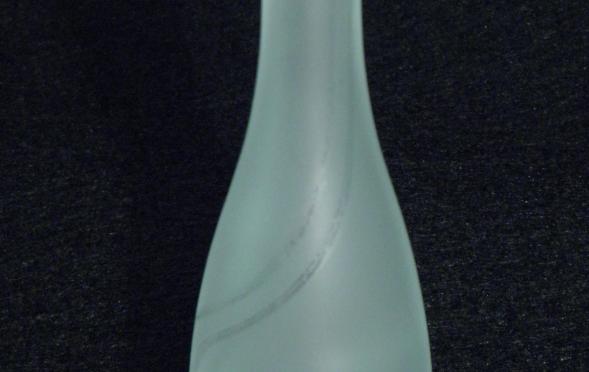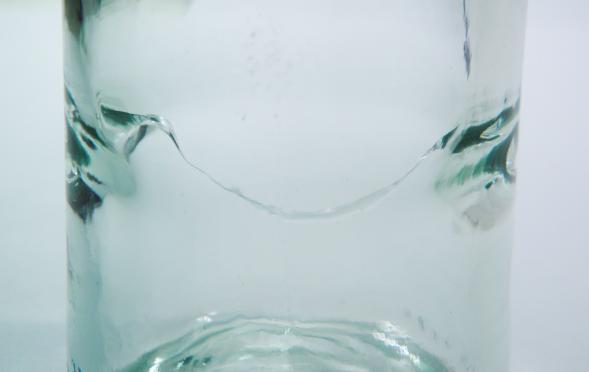Defect of the Month
Back to AGR's Library
Cat scratch cord appears as a series of parallel lines or curves on the outside surface of a container. They have very shallow relief, but can sometimes be felt with a fingernail as a subtle irregularity on the glass surface. Cat scratch cord is best viewed by reflecting a bright light off of the glass surface. Like other types of cord, cat scratch cords are usually vertically elongated parallel to the long axis of the container. They are most commonly observed in the sidewall, but can be found anywhere on the container’s exterior. Like other types of cord, cat scratch defects result from inhomogeneities in the glass melt due to refractory erosion, batch errors, or mixing problems. Cat scratch cord is specifically caused by a streamer of viscous glass flowing along the bottom of the forehearth. This streamer ends up as a cord on the outside of the gob as it passes through the orifice ring. Cat scratch cord is usually a cosmetic defect with a negligible effect on the glass strength. In rare circumstances, secondary decoration processes such as etching may be adversely affected by surface compositional variations in the cat scratch cord.

While the air is filled with the sound of birds chirping this time of year and they are plentiful on the tree branches, a Birdswing is not a welcome sight in your glass. A Birdswing defect is a thin strand of glass stretched between two points on the inside surface of the container, sometimes referred to as a filament or in some part of the world a Monkeyswing. They generally occur in the body of the container, usually extending from side to side. They are caused when glass viscosity is too low and the opposite inside surfaces of the parison touch, causing them to fuse. During the final blow process, a filament will be drawn between the opposite inside surfaces. Birdswings or Monkeyswings are usually considered critical defects by most in the industry and pose a risk for breakage during filling or use with a potential for glass fragments in product.

Alumina (Al2O3) is an extremely useful material in the glass industry. When incorporated into refractory brick, alumina’s high melting temperature and chemical resistance make it ideal for furnace components. In a different chemical form, alumina-containing minerals are intentionally added as a raw material to improve the durability of the glass. But grains of pure alumina – the mineral corundum – can occur as impurities in the mined materials, and are part of a family of contaminants called “refractory heavy minerals.” The crystalline grain shown here in polarized light, creating an effect reminiscent of a stained glass window, is an example of a corundum stone caused by naturally occurring contamination of feldspar, one common source of alumina for glass manufacturers.

Almost all fractures originate from a single origin where the tension stress exceeds the glass strength. In rare instances, bottles might exhibit two origins that are usually separated by some distance on the bottle surface; for example, when bottles break under an unusually high internal pressure load. The picture is a situation that is almost never observed where two origins are side-by-side, as shown by the double fracture mirrors. Each origin initiated from the ends of a collapsed blister that can be seen as the thin dark gray line just below the original glass surface (remnants of the collapsed blister are seen by the irregularly shaped semi-circle of irregular features just above the origins). What is so unique about this example is that two fractures started at exactly the same time but from two discrete points of origin. If either of the two origins had initiated first, only one fracture mirror would have been observed.
Pagination
- Previous page
- Page 8
- Next page